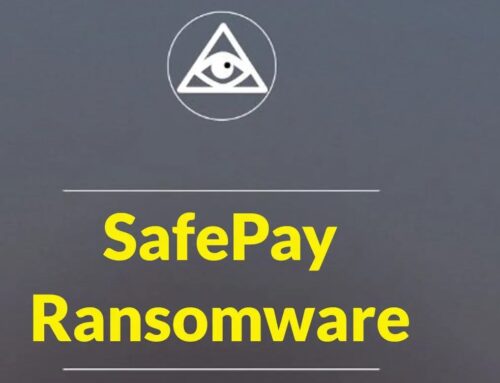
LARGEST EVER Bitcoin Hack Valued $3.5 Billion Uncovered
Unmasking the Largest Bitcoin Heist: A $3.5 Billion Revelation
The cryptocurrency landscape, while promising innovation and financial freedom, remains a prime target for sophisticated cybercriminals. Recent revelations have brought to light a monumental security breach: the largest Bitcoin hack ever recorded. This incident, previously unpublicized to the general public, involved the staggering theft of 127,426 Bitcoin (BTC) from a Chinese mining pool, LuBian, in December 2020. Valued at approximately $3.5 billion at the time of the theft, the stolen assets have since appreciated to an estimated $14.5 billion, underscoring the immense financial implications and the persistent threat within the crypto sphere.
The LuBian Heist: A Timeline and Impact
In December 2020, 127,426 BTC vanished from LuBian, a prominent Chinese Bitcoin mining collective. This theft, while occurring nearly five years ago, has only recently come to public attention, raising significant questions about the disclosure practices within the cryptocurrency ecosystem and the ability of malicious actors to operate undetected for extended periods. The sheer volume of stolen Bitcoin positions this event as an unprecedented exploit in the history of digital asset security breaches. The appreciation of the stolen funds from $3.5 billion to an astounding $14.5 billion highlights the volatile and often lucrative nature of cryptocurrency, making large-scale hacks even more attractive to threat actors.
Understanding Cryptocurrency Security Challenges
The LuBian hack serves as a stark reminder of the persistent security vulnerabilities inherent in digital asset management. While the specifics of how the compromise occurred have not been fully disclosed, general attack vectors against cryptocurrency platforms often include:
- Private Key Compromise: Unauthorized access to the cryptographic keys that control Bitcoin wallets. This can occur through phishing, malware, or insider threats.
- Exchange or Wallet Exploits: Weaknesses in the security infrastructure of cryptocurrency exchanges or custodial wallets, such as unpatched software, misconfigurations, or inadequate access controls.
- Supply Chain Attacks: Compromising third-party service providers or software components used by the target organization.
- Social Engineering: Tricking employees or users into divulging sensitive information or granting unauthorized access.
While no specific CVE number has been publicly associated with the LuBian hack, such large-scale breaches frequently exploit a combination of human vulnerabilities and technical weaknesses. For example, if unpatched software were involved, it could conceptually relate to vulnerabilities like CVE-2021-44228 (Log4Shell) if a flawed logging library was exploited, or a generic web application vulnerability like those found in the OWASP Top 10.
Addressing Future Cryptocurrency Security Breaches: Remediation Actions
Preventing incidents of this magnitude requires a multi-layered approach to security, encompassing technological safeguards, robust operational procedures, and continuous vigilance. For organizations involved in managing cryptocurrency assets, the following remediation actions are paramount:
- Implement Multi-Factor Authentication (MFA): Enforce strong MFA across all access points, especially for privileged accounts and critical systems.
- Regular Security Audits and Penetration Testing: Conduct frequent, thorough security assessments by independent third parties to identify and rectify vulnerabilities before exploitation.
- Cold Storage Solutions: For substantial cryptocurrency holdings, prioritize the use of cold storage (offline wallets) to minimize exposure to online threats.
- Strict Access Control: Implement the principle of least privilege, ensuring users and systems only have the necessary permissions to perform their functions.
- Employee Security Training: Educate staff on phishing awareness, social engineering tactics, and secure operational practices. Regular training can significantly reduce human-factor vulnerabilities.
- Patch Management: Maintain a rigorous patch management program, ensuring all software, operating systems, and network devices are updated promptly to address known vulnerabilities.
- Incident Response Plan: Develop and regularly test a comprehensive incident response plan to ensure a rapid and effective response to security breaches.
Tools for Cryptocurrency Security and Forensics
Effective cryptocurrency security relies on a suite of specialized tools for monitoring, analysis, and threat detection. While no single tool can prevent all attacks, a combination of these can enhance an organization’s defensive posture.
| Tool Name | Purpose | Link |
|---|---|---|
| Chainalysis Reactor | Blockchain analysis for tracing stolen funds and illicit activities. | https://www.chainalysis.com/solutions/reactor/ |
| CipherTrace Armada | Financial crime detection and anti-money laundering (AML) for crypto. | https://ciphertrace.com/armada/ |
| Ledger Live | Software companion for Ledger hardware wallets, providing a secure interface for managing cold storage. | https://www.ledger.com/ledger-live |
| Trezor Suite | Interface for Trezor hardware wallets, enabling secure management of cryptocurrency assets. | https://suite.trezor.io/ |
| Nmap (Network Mapper) | Network discovery and security auditing for identifying open ports and services, crucial for initial system hardening. | https://nmap.org/ |
| OWASP ZAP (Zed Attack Proxy) | Web application security scanner for identifying vulnerabilities in web-based cryptocurrency platforms. | https://www.zaproxy.org/ |
The Enduring Lessons of a $14.5 Billion Hack
The public revelation of the LuBian Bitcoin hack, nearly five years after its occurrence, serves as a critical inflection point for the cybersecurity community and the burgeoning cryptocurrency industry. It underscores several crucial realities: the long-term impact of successful breaches, the imperative for greater transparency, and the ever-escalating value of digital assets as targets for sophisticated threat actors. As the cryptocurrency market continues its trajectory, the lessons from this monumental theft must drive enhanced security protocols, proactive threat intelligence sharing, and a collective commitment to safeguarding digital wealth.





